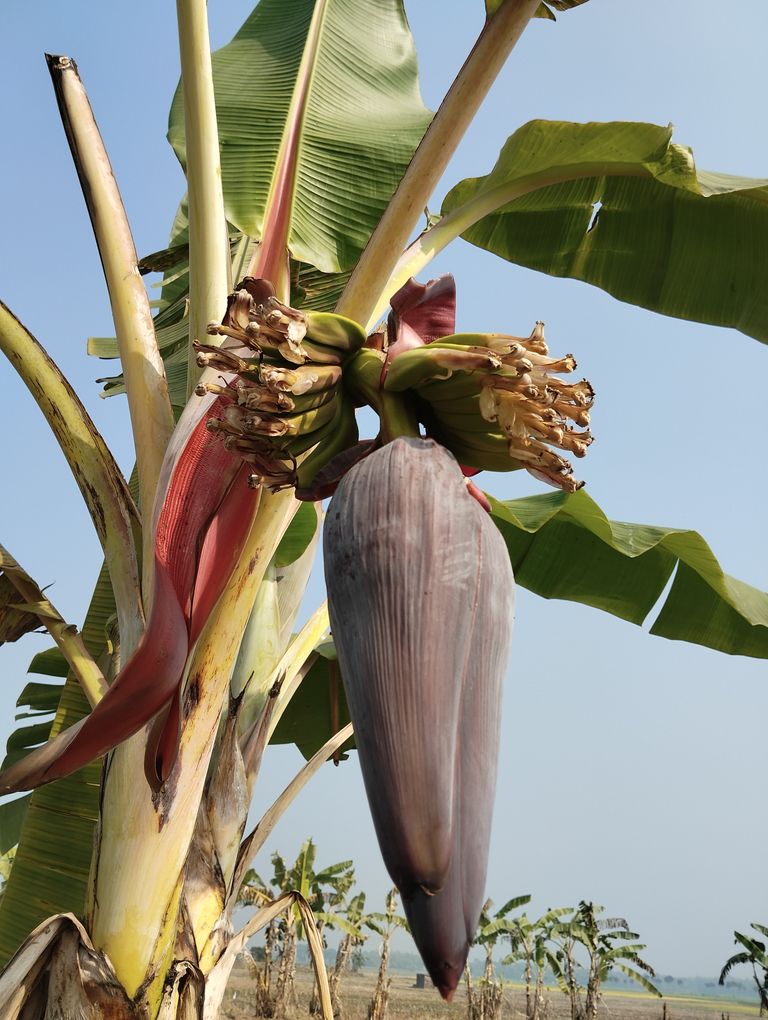
Glass Banana Mucha Recipe.
I will tell you how to make Glass Banana Mucha Recipe. Let's start.
When the glass banana tree comes to maturity, when small bananas come out of the stem, and when the banana gradually starts growing and the neck becomes full, the stem hangs one hand away from the banana, if that stem is cut while hanging, then the banana grows stronger. And my banana tree was very tall, so I brought a stick from my house to cut the stem, then I applied the stick to that banana tree and cut the banana stem and brought it home.
কাঁচ কলার মোচা রেসিপি।
কাঁচ কলার মোচার রেসিপি কিভাবে তৈরি করতে হয়, সে সম্পর্কে আমি আপনাদেরকে জানাবো চলুন শুরু করা যাক,
কাঁচকলা গাছে যখন মোচা আসে আসার পর মোচা থেকে যখন ছোট ছোট কলা বের হয়, আর যখন ধীরে ধীরে কলা বড় হতে থাকে আর গলা পরিপূর্ণতা হয়ে যায়, কলা থেকে এক হাত দূরে মুচা ঝুলে থাকে, ঝুলে থাকা অবস্থায় যদি ওই মুচা কেটে ফেলা হয় তাহলে কলাতে আরো শক্তিশালী বৃদ্ধি পায়। আর আমার কলা গাছটি অনেক লম্বা ছিল তাই আমি মুচাটি কাটার জন্য আমার বাড়ির পাশ থেকে একটি ময় নিয়ে আসি, তারপর আমি ওই কলা গাছের সাথে ময় লাগিয়ে আমি কলার মুচা কেটে নিয়ে বাড়িতে আসি।
তারপর মুচা নিয়ে আমি যা করলাম, মুচার ভেতরের অংশগুলো আস্তে আস্তে আমি সুন্দরভাবে বাঁচতে লাগলাম সুন্দর করে বাছার পর ,খুব ভালো করে পানি দিয়ে ধুয়ে নিতে হবে, যেন মুচার সাথে কোনরকম ধুলা বালি মাটি না থাকে সেদিকে অবশ্যই খেয়াল রাখতে হবে।যদি ধুলা বালি মাটি লেগে থাকে তাহলে খাওয়ার সময় কিসকিস করবে, যত ভালো করেই রান্না করা যাক না কেন খুব একটা সুস্বাদু হবে না, তাই অবশ্যই পানি দিয়ে মুচা ভালো করে ধরে নিতে হবে, আমি মুচা খুব ভালো করে পানি দিয়ে ধরে নিলাম।
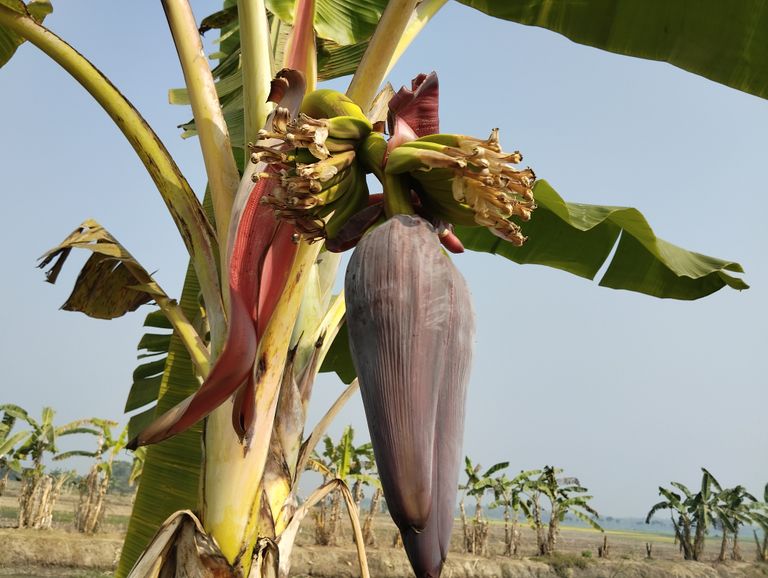
Here is a detailed 4000-character blog about banana plants, focusing on their cultivation, care, and benefits.
The Banana Plant: A Complete Guide to Cultivation and Care
Banana plants (Musa spp.) are among the most versatile and widely cultivated crops in tropical and subtropical regions. Known for their nutritional value, bananas are a staple food in many parts of the world. Additionally, the banana plant holds cultural, medicinal, and economic significance. This guide explores the essentials of banana plant cultivation, care, and the benefits it offers.
Understanding the Banana Plant
The banana plant is not a tree but a perennial herbaceous plant. It belongs to the Musaceae family. The plant consists of a pseudo-stem formed by overlapping leaf sheaths and can grow up to 6-20 feet tall depending on the variety. Its fruit, the banana, grows in clusters and is consumed both ripe and raw.
Key Features:
Scientific Name: Musa spp.
Lifespan: Typically 2-3 years per plant cycle.
Growth Habit: Herbaceous with large, elongated leaves.
Ideal Climate: Warm, humid conditions.
Varieties of Banana Plants
- Cavendish Banana: Commonly found in supermarkets, sweet and seedless.
- Plantains: Larger, starchy bananas used in cooking.
- Red Bananas: Sweet with reddish-purple skin.
- Dwarf Varieties: Ideal for smaller gardens or container planting.
Growing Conditions for Banana Plants
- Climate:
Banana plants thrive in tropical and subtropical climates. They require warm temperatures (25-35°C) and high humidity for optimal growth. Frost and strong winds can severely damage the plant.
- Soil Requirements:
Well-draining, fertile soil with a pH of 5.5-7.5 is ideal. Sandy loam or alluvial soils are highly preferred. Proper drainage is essential as banana plants are sensitive to waterlogging.
- Watering:
Banana plants need consistent moisture but cannot tolerate standing water. Drip irrigation is a great way to maintain even watering.
- Sunlight:
Full sun exposure for at least 6-8 hours daily is necessary for healthy growth.
Steps to Cultivate Banana Plants
- Land Preparation:
Clear the land and ensure proper drainage. Add organic matter such as compost or manure to enrich the soil.
- Planting:
Banana suckers (small offshoots of the parent plant) are the most common planting material. Space the plants 6-8 feet apart to allow proper growth and airflow.
- Fertilization:
Apply a balanced fertilizer rich in nitrogen, phosphorus, and potassium. Use organic fertilizers like cow dung or compost every 2-3 months.
- Mulching:
Cover the base of the plants with organic mulch to retain soil moisture, regulate temperature, and suppress weeds.
- Pruning:
Remove dead or damaged leaves regularly to encourage new growth and prevent pest infestations.
Common Pests and Diseases
- Pests:
Banana Weevil: Bore into the pseudo-stem, causing wilting.
Aphids: Spread viral diseases like Banana Bunchy Top Virus.
Nematodes: Attack roots, reducing nutrient uptake.
- Diseases:
Panama Disease: A fungal infection causing wilting and yellowing.
Black Sigatoka: A fungal disease affecting leaves.
Moko Disease: Bacterial wilt that damages the plant systemically.
Prevention and Control:
Use disease-resistant varieties.
Practice crop rotation and sanitation.
Apply organic pesticides like neem oil or bio-control agents.
Harvesting and Post-Harvest Care
Banana plants produce fruit 9-12 months after planting. Harvest the bunch when the bananas are mature but still green. Avoid damaging the fruit during cutting. Store bananas in a cool, well-ventilated area to ripen naturally.
Uses and Benefits of Banana Plants
- Nutritional Value:
Bananas are rich in potassium, fiber, and vitamins B6 and C. They are a quick energy source and promote digestive health.
- Culinary Uses:
Both ripe and unripe bananas are used in a variety of dishes. Banana leaves are used as plates and wrappers in many cultures.
- Economic Importance:
Bananas are a major export crop, contributing significantly to the economy of many tropical countries.
- Environmental Benefits:
Banana plants act as natural windbreakers and help prevent soil erosion.
- Medicinal Uses:
Banana flowers and stems are used in traditional medicine to treat ailments like ulcers, kidney stones, and diabetes.
Challenges in Banana Cultivation
Climate change poses a significant threat to banana farming by increasing the risk of diseases and extreme weather events.
Market fluctuations and transportation issues can affect profitability.
The banana plant is a valuable asset to agriculture due to its economic, nutritional, and environmental contributions. With proper care and management, cultivating banana plants can be a rewarding endeavor for both small-scale gardeners and commercial farmers. By understanding its needs and challenges, we can ensure sustainable banana production for generations to come.
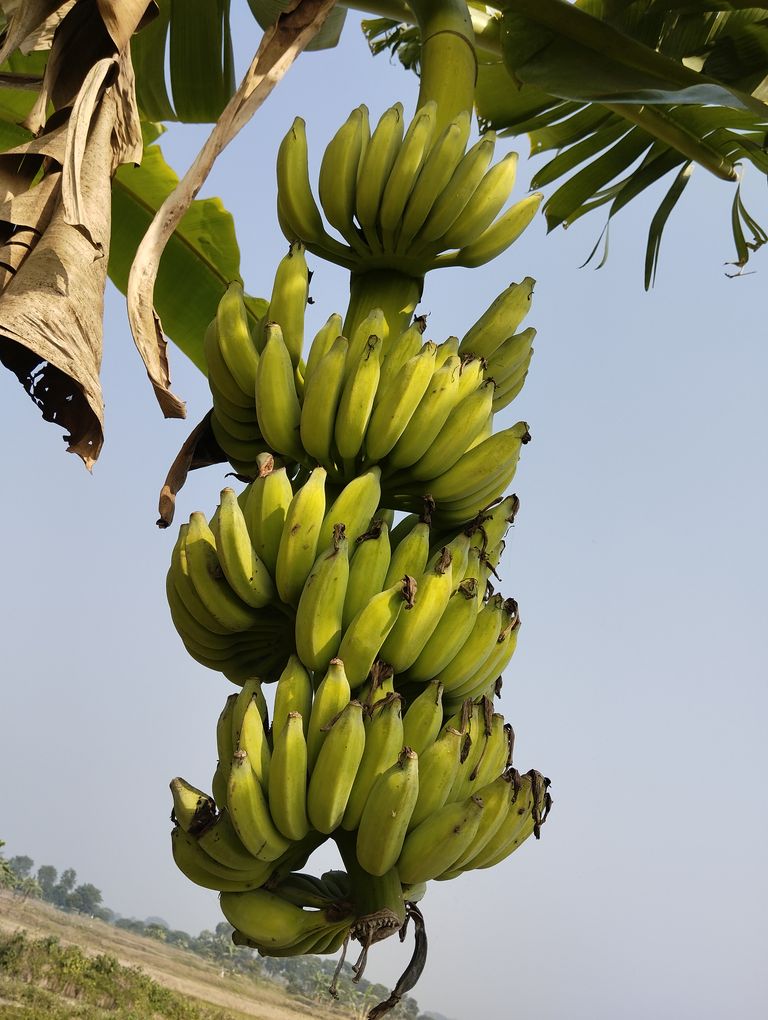
Then what I did with the mucha, I slowly started to clean the insides of the mucha nicely. After cleaning it nicely, I had to wash it very well with water, making sure that there was no dust or dirt on the mucha. If there was dust or dirt on it, it would make a squeaky sound while eating, no matter how well it was cooked, it wouldn't be very tasty, so I had to wash the mucha well with water, I washed the mucha very well with water.
First, boil the masa, then clean it, cover it with a lid and let it cook for a while. After a while, stir it gently with a spoon so that it doesn't stick together. This is how you will know if it doesn't.
When the glass banana tree comes to maturity, when small bananas come out of the stem, and when the banana gradually starts growing and the neck becomes full, the stem hangs one hand away from the banana, if that stem is cut while hanging, then the banana grows stronger. And my banana tree was very tall, so I brought a stick from my house to cut the stem, then I applied the stick to that banana tree and cut the banana stem and brought it home.
Banana Blossom Curry Recipe Mocha Curry.
Banana blossom, commonly known as "mocha" in Bengali cuisine, is a versatile and nutritious ingredient. This flower of the banana plant is packed with vitamins, minerals, and antioxidants. Preparing banana blossom curry is a labor of love, as it requires patience in cleaning and chopping. However, the delicious outcome makes it worth the effort. Here's a detailed recipe to prepare traditional Bengali-style mocha curry.
Ingredients
For Cleaning the Banana Blossom:
1 medium-sized banana blossom
Water with a few drops of lemon juice or a pinch of turmeric (to prevent discoloration)
For the Curry:
2 tbsp mustard oil (or any cooking oil)
1 tsp panch phoron (Bengali five-spice mix)
1 medium-sized potato, diced
1/2 cup boiled chickpeas (optional)
1/2 tsp turmeric powder
1/2 tsp red chili powder
1/2 tsp cumin powder
1/2 tsp coriander powder
1/2 tsp garam masala powder
2 medium-sized tomatoes, finely chopped
1 tbsp ginger paste
2 green chilies, slit
1/4 cup grated coconut (optional, for garnish)
Salt to taste
Sugar to taste
Preparation
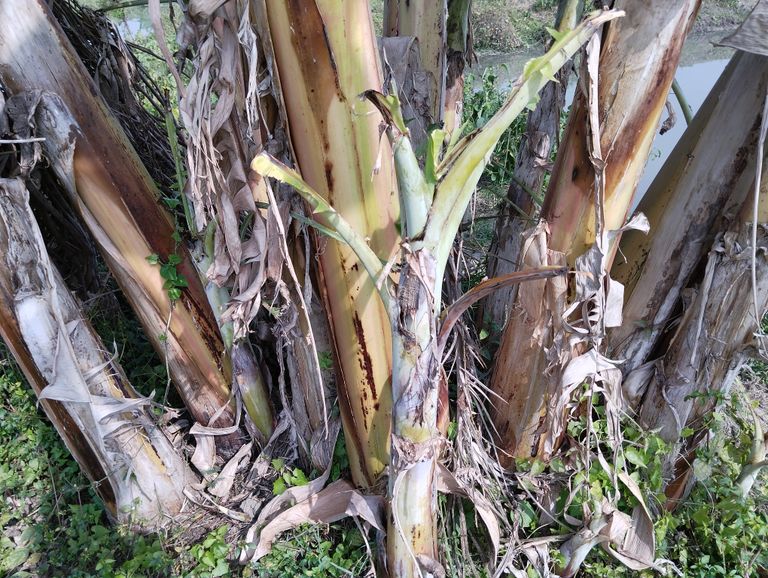
Banana Cultivation: A Comprehensive Guide
Bananas are one of the most consumed fruits globally, valued for their taste, nutrition, and versatility. Cultivating bananas can be a profitable venture if done with proper planning and care. This guide outlines the essential steps for successful banana farming.
- Understanding the Crop
Bananas thrive in tropical and subtropical climates. They belong to the genus Musa and are known for their perennial growth. Key varieties include Cavendish, Robusta, Nendran, Red Banana, and Grand Naine. Choosing the right variety is crucial based on market demand and climatic conditions.
- Ideal Climate and Soil Conditions
Temperature: Bananas require a warm climate, with temperatures ranging between 25°C and 35°C. Extreme temperatures or frost can harm the crop.
Rainfall: Optimal rainfall is 1000-2500 mm annually, but irrigation can supplement in dry regions.
Soil: Bananas grow best in well-drained, loamy soil with a pH of 6.0–7.5. Avoid waterlogged areas as they can lead to root rot.
- Land Preparation
Clear the land of weeds and debris.
Plow the field 2–3 times to loosen the soil.
Create trenches or pits measuring 60 cm x 60 cm x 60 cm at a spacing of 2 m x 2.5 m for optimal plant growth.
- Planting Material
Bananas are propagated using suckers or tissue-cultured plants.
Suckers: Choose healthy, disease-free suckers weighing 1.5–2 kg.
Tissue-cultured Plants: These are disease-free and ensure uniform growth, leading to higher yields.
- Planting Method
Fill the pits with a mixture of soil, organic manure (10–15 kg), and neem cake (500 g).
Plant the sucker or tissue-cultured plant at the center of the pit.
Ensure the plant is upright and the soil is firm around the base.
- Irrigation Management
Bananas need regular watering, especially during dry periods.
Irrigate immediately after planting and then follow a weekly schedule.
Drip irrigation is highly recommended to save water and ensure uniform moisture.
- Fertilizer Application
Bananas are heavy feeders, requiring a balanced supply of nutrients.
Organic Fertilizers: Apply 10–15 kg of compost or farmyard manure per plant.
Chemical Fertilizers: Use nitrogen (200 g), phosphorus (60 g), and potassium (300 g) per plant in split doses throughout the growing period.
- Pest and Disease Management
Common Pests: Banana weevils, aphids, and nematodes. Use organic or chemical pest control methods.
Diseases: Fusarium wilt, Panama disease, and sigatoka leaf spot. Practice crop rotation, use disease-free plants, and apply fungicides if necessary.
- Weed Control
Regular weeding is essential to prevent competition for nutrients. Use mulch to suppress weed growth and retain soil moisture.
- Crop Support
Provide support to banana plants to prevent toppling due to wind or heavy fruit bunches. Bamboo poles or string support can be used.
- Harvesting
Bananas are ready for harvest 12–15 months after planting.
Harvest when the fruits are mature, indicated by the change in color and size.
Cut the bunch with a sharp knife, leaving a small portion of the stem attached.
- Post-Harvest Handling
Store bananas in a cool, shaded area to prevent spoilage.
For commercial purposes, pack the bananas in crates or cartons for transport.
Ripen the bananas using natural methods or ethylene gas in ripening chambers.
- Economic Aspects
Yield: A single plant can produce 20–40 kg of bananas annually.
Market Demand: Bananas have consistent demand throughout the year, making them a profitable crop.
Cost and Profit: Initial investment includes planting material, fertilizers, and irrigation systems, but returns are high due to the crop’s perennial nature.
Conclusion
Banana farming, when done with proper care, can be a lucrative business. By understanding the crop’s requirements, implementing modern techniques, and managing resources effectively, farmers can achieve high yields and profits. Whether for local consumption or export, bananas remain a staple crop with immense potential.
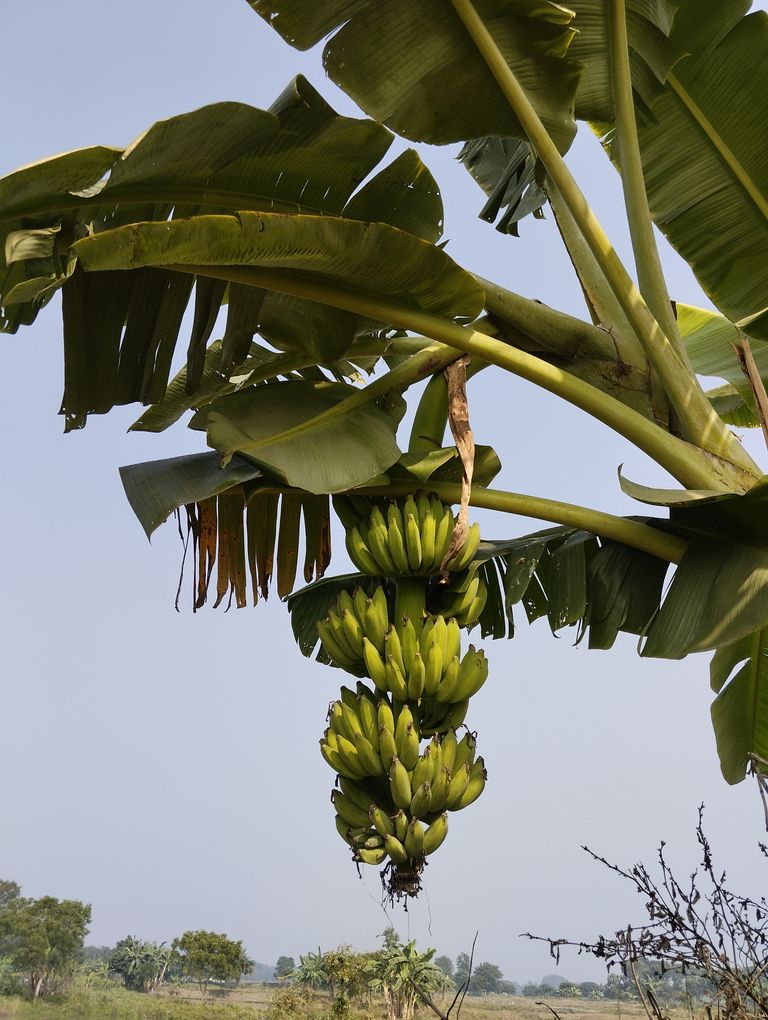
Cleaning the Banana Blossom:
Cleaning banana blossom is the most time-consuming part of this recipe.
Remove the outer layers of the blossom until you reach the tender inner parts.
Separate the florets, remove the stamen and the small plastic-like petal from each floret.
Finely chop the florets and immerse them in water with lemon juice or turmeric.
Boiling the Banana Blossom:
Drain the chopped florets and rinse them well.
Boil the florets in salted water until they are soft. This may take around 10-15 minutes.
Drain and set aside.
Cooking the Curry
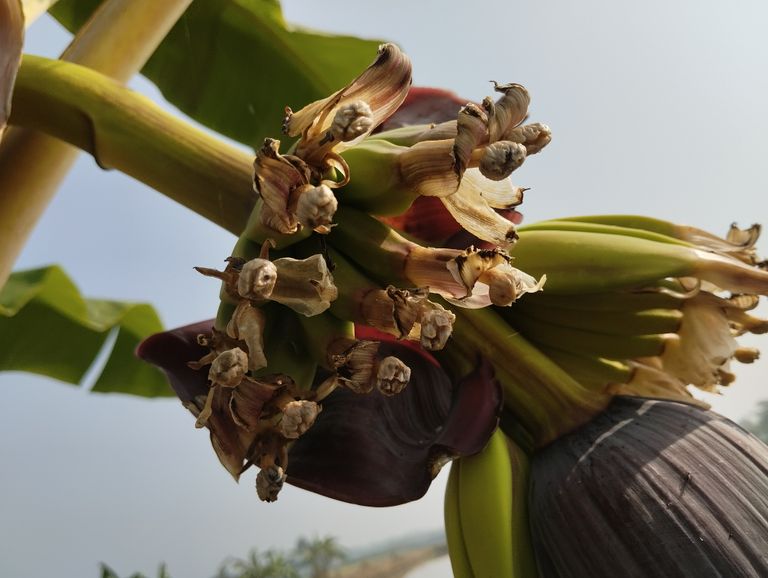
Prepare the Base:
Heat mustard oil in a pan until it smokes slightly, then reduce the heat.
Add panch phoron and let it splutter.
Add diced potatoes and sauté until lightly golden.
Adding Spices and Tomatoes:
Add turmeric powder, red chili powder, cumin powder, and coriander powder.
Stir and cook for a minute until the spices release their aroma.
Add chopped tomatoes and ginger paste. Cook until the tomatoes are soft and the oil separates.
Mixing the Banana Blossom and Chickpeas:
Add the boiled banana blossom to the pan and mix well with the spice base.
Add boiled chickpeas if using. Mix thoroughly.
Cooking the Curry:
Add a cup of water, cover, and let it simmer on low heat for 10-15 minutes until the flavors meld and the potatoes are cooked.
Add salt and a pinch of sugar to balance the flavors.
Finishing Touches:
Sprinkle garam masala powder and mix well.
Garnish with grated coconut for added texture and flavor.
Serving Suggestions
Banana blossom curry is best enjoyed with steamed rice. It pairs beautifully with traditional Bengali sides like dal and fried vegetables. For a complete meal, serve it alongside some fried papad and a dollop of ghee on rice.
Tips for Success
Always wear gloves or apply oil to your hands while cleaning the banana blossom to avoid staining.
Adding chickpeas is optional but enhances the texture and nutritional value of the dish.
Mustard oil gives an authentic flavor, but you can substitute it with any neutral oil.
The Art of Banana Blossom Cooking: A Culinary Delight
Banana blossom, often referred to as "banana flower" or "mocha" in Bengali, is a hidden gem in the world of vegetables. This edible flower, a by-product of the banana tree, is not only nutritious but also holds a unique place in the culinary traditions of South and Southeast Asia. Its subtle flavor, tender texture, and immense health benefits make it a versatile ingredient in various dishes. This blog delves into the preparation and benefits of banana blossom while showcasing its significance in traditional and modern cuisines.
What Is a Banana Blossom?
The banana blossom is the large, tear-shaped flower that grows at the end of a banana cluster. The outer layers, called bracts, protect the inner florets, which are used in cooking. While the outer layers are often discarded, the inner florets and the core of the blossom are the edible parts. The blossom is a rich source of fiber, antioxidants, and essential nutrients, making it a valuable addition to any diet.
Nutritional Benefits of Banana Blossom
- Rich in Nutrients: Banana blossoms are loaded with essential vitamins and minerals, including Vitamin C, Vitamin E, potassium, magnesium, and iron.
- High in Fiber: They are an excellent source of dietary fiber, aiding digestion and promoting gut health.
- Antioxidant Properties: The antioxidants present in banana blossom help combat free radicals, reducing the risk of chronic diseases.
- Supports Women's Health: Traditionally, banana blossom is believed to regulate menstrual cycles and alleviate symptoms of premenstrual syndrome (PMS).
- Boosts Immunity: Regular consumption strengthens the immune system and enhances overall health.
Preparation of Banana Blossom
Preparing a banana blossom requires some patience and skill, as it involves peeling off the tough outer layers and extracting the tender inner florets. Here's a step-by-step guide:
- Remove the Outer Layers: Peel off the dark purple bracts until you reach the pale yellow inner layers.
- Separate the Florets: Carefully extract the florets from each layer. These are the edible parts.
- Clean the Florets: Each floret contains a small, stiff stem (the pistil) and a translucent sheath (the calyx). Remove these parts to avoid bitterness.
- Chop and Soak: Chop the florets finely and soak them in water with a pinch of salt or turmeric. This prevents discoloration and removes any residual bitterness.
- Cook as Desired: Once cleaned, the florets can be cooked into a variety of dishes, such as curries, stir-fries, fritters, or even salads.
Popular Dishes with Banana Blossom
- Banana Blossom Curry: A creamy, spiced curry made with coconut milk and aromatic spices.
- Banana Blossom Pakoras: Deep-fried fritters made with a batter of chickpea flour and spices.
- Banana Blossom Salad: A refreshing dish with shredded banana blossom, lime juice, and a sprinkle of roasted peanuts.
- Mocha Ghonto: A traditional Bengali dish where banana blossom is cooked with potatoes, lentils, and spices.
Cultural Significance
In many cultures, banana blossom is not just a food ingredient but also a symbol of fertility and abundance. In India and Southeast Asia, it is often used in religious rituals and traditional medicine. Its use in dishes like "Mocha Ghonto" reflects its deep-rooted connection to the culinary heritage of Bengal.
Health Benefits in Detail
- Improves Heart Health: The potassium content helps regulate blood pressure, while the antioxidants reduce the risk of cardiovascular diseases.
- Aids Weight Loss: Low in calories and high in fiber, banana blossom is ideal for weight watchers.
- Enhances Lactation: In traditional medicine, it is often recommended for breastfeeding mothers to boost milk production.
- Manages Diabetes: The high fiber content helps stabilize blood sugar levels.
Tips for Cooking Banana Blossom
Always oil your hands before handling banana blossom to avoid sticky sap stains.
Soak chopped florets in water with lemon juice to retain their color.
Pair banana blossom with coconut and mild spices for a balanced flavor.
Banana blossom, or mocha, is more than just an ingredient; it’s a testament to the resourcefulness of traditional cuisines. Its health benefits, combined with its culinary versatility, make it a must-try for food enthusiasts. Whether you’re a fan of rich curries, crispy fritters, or light salads, banana blossom has something to offer for every palate. So, the next time you spot this humble flower at your local market, don’t hesitate to bring it home and explore its delightful flavors.